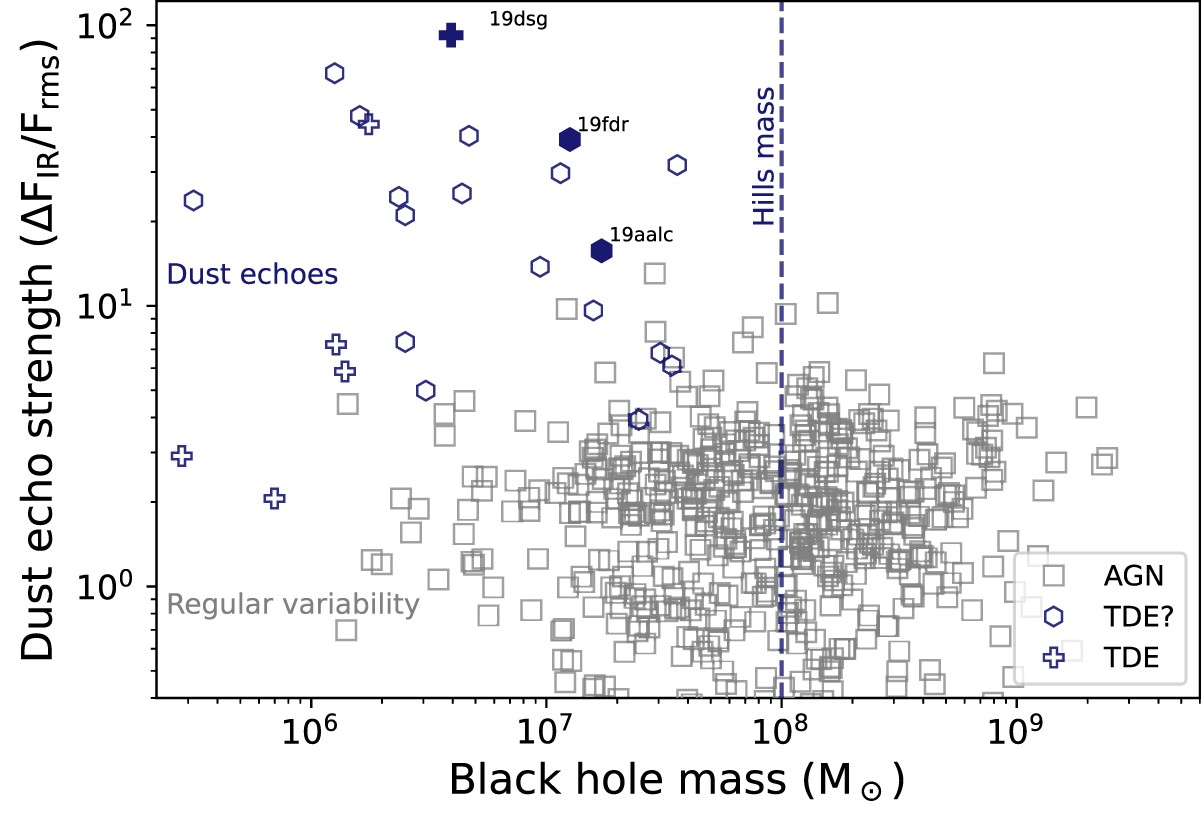Today in MNRAS, we published a paper studying neutrino emission from supermassive black holes.
Prompted by the discovery of two tidal disruption events (TDEs) coincident with IceCube neutrino alerts, we perform a more systematic analysis of nuclear flares detected by ZTF.
Both TDEs AT2019dsg andAT2019fdr shared a common but unusual property: they both exhibited a luminous ‘dust echo’. A dust echo is a delayed re-emission of light from the flare, caused by dust in the host galaxy, and is seen in at infra-red wavelengths.
Looking broadly at the thousdands of ZTF nuclear transients, we find that most do not exhibit any dust echo at all. Most sources that do vary in the MIR are AGN which do not show any single bright flare. However, a substantial fraction of TDEs do exhibit them.

There are ultimately only a handful of bright accretion flares in the history of ZTF.
We next check to see how many of these flares are coincident with IceCube neutrino alerts. In addition to the two TDEs, we find a third candidate, AT2019aalc, which is coincident with a neutrino alert.

Taken together, this result provides firther evidence of neutrino emission in supermassive black holes.